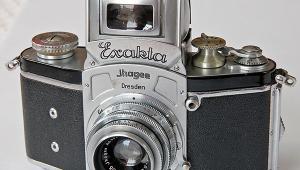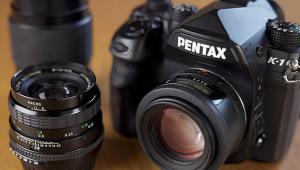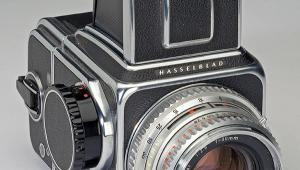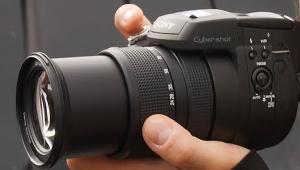I use a 4 x 5 Crown Graphic since 1973 The last new one in Fresno CA
Best camera I have I wish some would re-make this one
The 2x3 Century Graphic; The Inexpensive Technical Camera
Graphic cameras were made in 21/4x31/4, 31/4x41/4, 4x5, and 5x7" film sizes, either with (Speed) or without a rear focal plane shutter (Century, Crown, and Super). The 4x5 is often recommended as a starter large format camera and many are still in use today. The 3x4s and 5x7s are somewhat rare and collectible, but what about the 2x3s? The 2x3 Crown (leather-covered mahogany) and Century (bakelite plastic), "baby" versions of their larger format brethren deserve more attention than they usually get. Often described as a "press" camera, they are in actuality basic technical cameras.
 |
|
|
Having no rear movements, they are limited in altering subject shape or perspective. However, they do have useful front movements: 18mm rise, 7mm shift, 18Þ backward tilt, (swing, with a simple modification) plus 18Þ forward tilt and up to 35mm fall using the dropped front camera bed. These movements are quite adequate for adjusting the plane of focus and correcting converging vertical lines. Plus, they are relatively lightweight (4.4 lbs with lens, handgrip, and rollfilm back). Best of all, they are the least expensive technical cameras available.
The 2x3 Graphics are usually found with a side-mounted Kalart rangefinder that can be adjusted to focus a single lens. It is not the most convenient to use, as one has to focus using the rangefinder and then compose the picture through a separate optical viewfinder having interchangeable masks for different focal lengths. Its virtue lies in being adaptable to a range of focal lengths (slightly wide angle to long-normal and the shorter telephoto lenses). So if you find a camera without its original lens, or choose to substitute a more modern multi-coated lens for that which came with the camera, you are still in business. Directions for adjusting the Kalart rangefinder are on the Graflex.org website.
The lenses usually found on the baby Graphics are the Wollensak Optar four-element Tessar-type or the Graflar or Trioptar triplets. I have taken some nice pictures with the Optars, they render a softer image, but forego the triplets. Much better are the Kodak Ektar and Rodenstock, Schneider or Zeiss lenses that were also offered for the Graflex XLRF. My camera came equipped with a coated Zeiss 100mm f/3.5 Tessar lens and I have seen others with the very sharp 80mm f/2.8 Schneider Xenotar. Lensboards are small, limiting the selection of lenses (50mm maximum diameter rear element), but with a rangefinder-coupled 80mm Schneider Xenotar (covers 6x7cm only) and Graflex handgrip, or a 100mm Schneider Symmar on the tripod (providing the most coverage on 6x9 using camera movements), you'll have a potent picture-taking package.
Wide angle and telephoto lenses are also available for the 2x3 Graphics. The most common telephoto lens is the 8" f/5.6 Tele-Optar, a good quality four-element lens similar to a Schneider Tele-Xenar. Better are the five-element 180mm f/4.5 Rodenstock Rotelar or 180mm f/5.6 Schneider Tele-Arton, but realize that long focus lenses are not this camera's forté. Although these telephotos can be coupled to the rangefinder, subject viewing is through a metal mask having a tiny window without any provision for subject magnification.
The most common wide angle is the 65mm f/6.8 Optar, but a 65mm f/6.8 Schneider Angulon would also be a good choice. Focusing extreme (wider than 65mm) wide angle lenses can be a chore for some cameras, if possible at all. Unique to the Graphic cameras is a hinged focusing track, which allows the 2x3 Crown and Century (but not the Speed Graphic) to rack and pinion focus the 47mm f/8 Super Angulon! The 47mm focal length is equivalent to a 21mm lens on a 35mm camera and will cover the 6x9cm film format with room to spare. This lens cannot be coupled to the rangefinder so you either ground glass focus on a tripod or use a focusing scale for handheld shots. You won't get much in the way of movements due to bellows compression, but the ability to use this focal length outclasses some cameras with much larger price tags.
There is some discussion about the lack of film flatness with the rollfilm backs for the Graphic cameras. They were manufactured over a 40-50-year time span and one just needs to find a late model lever-wind rollfilm back marked Singer or General Precision in good condition. They were made in 6x6, 6x7, and 6x9 formats and have the rollers at either end of the film gate which help to keep the film flat. Sheet film holders and Graphmatics (six-shot magazines) are also readily available for those who want to try sheet film in black and white (find 2x3 sheet film at jandcphoto.com).
Have you ever wanted to take a photograph in near darkness? The Focuspot was an accessory lamp which attached to the top of the Kalart rangefinder. It was powered by the batteries in a Graflite flash tube connected by a bi-post (to the Focuspot) to household (to the Graflite) cord. When turned on, by rotating the chrome ring on the rear of the housing, a beam of light is projected through the two rangefinder windows toward the subject to be photographed. By focusing the lens as you would in any normal daylight situation, the twin beams of light are brought together to coincide on the subject, which is now in sharp focus.
The manual says the Focuspot has a range of about 40 ft, but my tests suggest 20-25 ft is probably a more realistic limit, which also happens to be the working range of the Graflite flash under typical circumstances. The whole setup, on a 2x3 Century Graphic, looks a bit ungainly, but is actually very stable with a Graflex handgrip on one side and the Graflite flash on the other providing a secure two-handed hold.
Want to see what a Graphic can do? You won't have to spend a lot of money to find out as 2x3 Graphic outfits with a rollfilm back start around $150 and go up from there depending on the lens. Give it a try, it's a great way to have some fun with a different style of photography, but be forewarned--that big 6x9cm transparency might cast its spell on you.
- Log in or register to post comments


For what it's worth, Mamiya RB67 backs work on 2x3 Graflok backs, and are more modern and precise.

















































